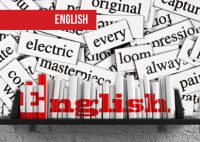Cloze Test New pattern Questions for SBI PO : Set 8
Want to Become a Bank, Central / State Govt Officer in 2020?
Join the Most awarded Coaching Institute & Get your Dream Job


Now Prepare for Bank, SSC Exams from Home. Join Online Coure @ lowest fee
Lifetime validity Bank Exam Coaching | Bank PO / Clerk Coaching | Bank SO Exam Coaching | All-in-One SSC Exam Coaching | RRB Railway Exam Coaching | TNPSC Exam Coaching | KPSC Exam Coaching
Cloze Test New pattern Questions for SBI PO : Set 8
D.1-10): In the following passage there are words highlighted, each of which has been numbered. These numbers are printed below the passage and against each, four words are suggested marked as (a), (b), (c) and (d) out of which only one word fits in. If the given word itself is appropriate mark your answer as (e).
G) Yoga has become the new quick fix for people with a host of (1) troubles. With its growing popularity, comes a range of books that teach yoga, ranging from a beginner’s manual to (2) deprived Whether it is backache, blood pressure, insomnia or difficult pregnancy, the potential patient is (3) protected, “Why don’t you try yoga? However it requires regular (read every day) practice. People may go to the gym and workout every day but doing yogaasanassomehow seems to be difficult. But yoga involves more than just behaving like a professional contortionist. Bharat Thakur’s Yoga For The Family: A Holistic Approach explains the approach in the first chapter. Thakur, a new age yoga guru, points out that while yoga can be used to improve physical well being, proper practice can (4) deepen one’s inner consciousness. The book is divided into various sections — for the body, for the mind, for couples, for pregnant women, for the body … Apart from photographs, each asana is accompanied by (5) composite explanations of how to do it and the benefits it brings. Quite a few also have cautionary notes. The photographs are clear and, in some cases, there are close up shots to (6) illustrate clearly how the asana should be performed. There is also a section (7) zealous to children with the benefits relating to growth and digestion. The last chapter Kayakalpa is meant for regeneration and rejuvenation. A 41-day course, it has detailed instructions of do’s and don’t’s. The benefits of regular practice of yoga are well known. But the whole (8) cadre of self-help books on yoga raises some disturbing questions. Is it wise to allow an inexperienced person to practise asanas based on photographs and some explanatory notes? A first-timer may get hurt. To be fair, Thakur has (9) cautionary notes against many — those with cervical spondylosis and vertigo cannot do jalandhara bandha, those with weak knees cannot do vrikshasana, those with high blood pressure and a history of heart disease cannot practise surya namaskar or dhanurasana etc. But what about people who do not know that they have problems? What about those who develop problems after doing these exercises? Also yoga asanas, if practised under the guidance of a trained teacher, can be (10) diversified and adjusted to suit individual needs. Isn’t that a better way of learning than to try it on one’s own?
1)
a) constrains
b) goodness
c) ailments
d) ability
e) No correction required.
2)
a) erudite
b) obscure
c) sapient
d) arcane
e) No correction required.
3)
a) warned
b) cautioned
c) imperil
d) advised
e) No correction is required.
4)
a) obtuse
b) awaken
c) intense
d) profound
e) No correction required.
5)
a) nexus
b) aggregate
c) lucid
d) blend
e) No correction required.
6)
a) reckon
b) represent
c) suspect
d) projected
e) No correction required.
7)
a) relieved
b) tedious
c) devoted
d) palliated
e) No correction required.
8)
a) control
b) stock
c) division
d) genre
e) No correction required.
9)
a) misery
b) cutlery
c) forgery
d) promissory
e) No correction required.
10)
a) corporate
b) counted
c) modified
d) narrowed
e) No correction required.
Answer Key:
1) c 2) a 3) d 4) b 5) c 6) e 7) c 8) d 9) e 10) c.



